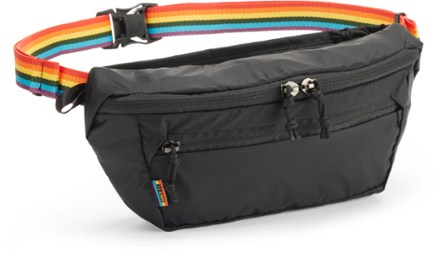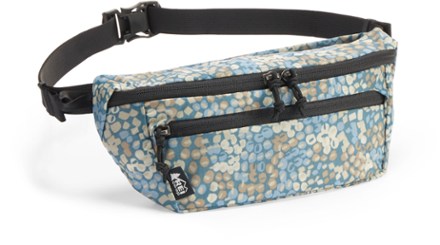If you use a mobility device, it's no secret that campgrounds were not originally built with people who use wheelchairs or other devices in mind. The Americans with Disabilities Act (ADA) and Architectural Barriers ACT (ABA) mandate that public and private entities make outdoor infrastructure accessible to people with a wide range of disabilities. Many challenges remain, however, for campers who use wheelchairs, as well as for others who have a range of physical disabilities.
This article, specifically focused on those who use wheelchairs, offers tips to help ensure you have a successful and enjoyable camping trip. In it we cover some key topics:
- Finding groups that specialize in adaptive recreation
- How to find campgrounds that are ADA compliant—or have some accessibility features
- Camping gear that meets the unique needs of wheelchair campers
- Other considerations for campers who use wheelchairs
Users of wheelchairs, of course, are a diverse group. For this article, we talked to two seasoned campers. This article is based on the experiences and expertise of Aarynn Cypher, who uses a manual wheelchair, and Jacob Wacker, who uses a motorized wheelchair. (Their experiences, while valuable, may not necessarily represent every wheelchair user).
Wheelchair-accessible RVs are a great option for anyone with access to one. This article will focus on tent camping tips, though our experts also said that an accessible van makes a great base of operations for someone who uses a wheelchair or has limited mobility. The interior space can serve as a sleeping area, staging area or dry storage area.
Finding Full-Service Accessible Camping Programs
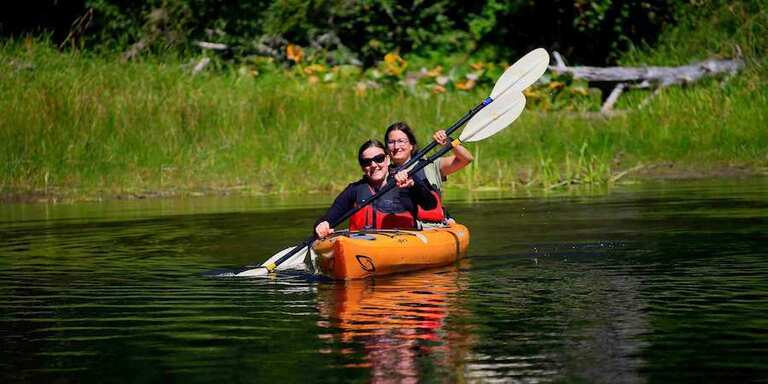
If you can find a public and/or private group that offers full-service camping getaways, they'll bring the camping gear and book the site. You'll get a list of personal essentials to bring but can otherwise leave the logistics to them. Organizing groups are also adept at accommodating unique needs. This is a great chance to see what camping is like for you—and, we hope, to decide it's something you want to do on your own in the future.
Examples of Full-Service Accessible Outdoor Adventure Programs
Both our solo camping experts participated in an adaptive camping program called CampAbility, which is a joint effort of several local REI partners, including Oregon Spinal Cord Injury (OSCI) Connection and Adventures Without Limits (AWL). REI Cooperative Action Fund grantee partners Adaptive Adventures, Outdoors For All and Vermont Adaptive Ski and Sports also offer a variety of outdoor programs designed for both youths and adults with physical disabilities.
Finding Accessible Outdoor Adventure Programs Locally
Jacob Wacker's advice on finding local groups that work with disabled adventurers is simple: "Just Google 'adaptive' things in your city. There are so many nonprofits that run free or low-cost activities, and they are changing all the time." Jacob also adds: "But there are also massive 'dead spots' around the country." So periodically check local offerings, including programs run by municipal, county and state parks departments, and consider a trip further afield if one catches your eye.
How to Find Wheelchair-Accessible Camping Places
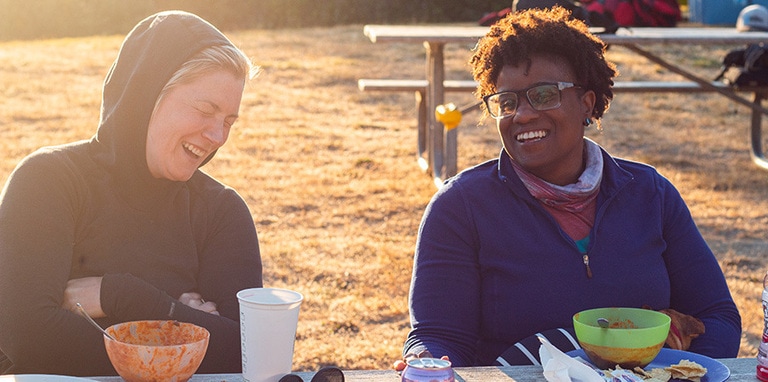
The ADA has specific guidelines for campgrounds (public and private), but compliance varies and often falls short. A campground might, for example, set aside the required number of camping units with mobility features, but still lack basics like grab bars in restrooms, or have noncompliant trails that make reaching restrooms difficult.
Accessible campsites shouldn't have steeply inclined areas, nor have objects (boulders, logs or posts) spaced so closely that you won't be able to maneuver between them. Surface areas should be relatively smooth and hard packed to make rolling easier. Picnic tables should have one bench removed or an extension added to allow you to roll up close.
We won't delve here into all of the advocacy work still needed in order to create truly accessible campgrounds, other than to suggest you should always convey concerns to campground managers when accessibility improvements are needed.
Wacker has a can-do attitude when he camps: "You can make almost any site work," he notes. That said, doing research to find and reserve a mobility-compliant site is time well spent. (Securing a reservation is best, but many campsites are available strictly on a first-come, first-serve basis.)
Where and How to Check for Campgrounds with Mobility Features
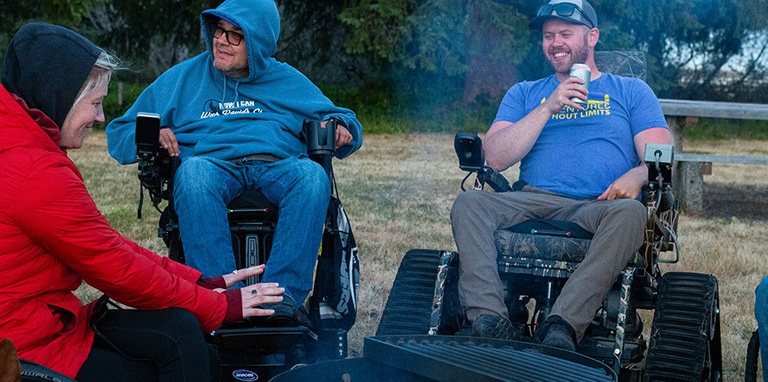
National parks: Because the National Park Service (NPS) has a well-established accessibility management program for developed park areas, you'll find many campgrounds with mobility features in the system. Most park visitor centers are also likely to meet ADA standards. This overview page shows which parks have accessible facilities such as level camp sites, accessible restrooms and accessible parking; individual park websites have details about which campgrounds include accessible sites.
Other public lands: National parks comprise only a small percentage of public lands. Other federal agencies, like the Bureau of Land Management (BLM), as well as state and local agencies nationwide, also have campgrounds in their park systems. ADA compliance varies widely among all those entities. The U.S. Forest Service has created an Interactive Visitor Map that you can use to find accessible sites, trails and more within national forests: Select the accessibility option under "explore."
Recreation.gov: This one-stop website lets you reserve recreational campsites in a wide range of federal lands (including some national parks), as well as state and local parks. The camping search feature lets you filter for locations that have accessible campsites. To find information about electric hookups (important for wheelchair users who need to recharge batteries), you need to look at each campground's available features.
Hipcamp: This one-stop website lets you reserve places on private land throughout the U.S. and Canada. Hipcamp, an REI partner, has a mix of options, including tent campsites, RV sites, cabins and yurts, which might be on a host's farm, winery or other natural acreage. Hipcamp lets you search for wheelchair accessible sites, but not electric hookups. Hipcamp makes it easy to contact the host of the outdoor stay, though, so you can ask about any specific needs you have.
Always inquire about sites with mobility features: Both public and private campgrounds are required to have accessible sites and to have policies to ensure those sites are held back until all standard campsites are rented first.
Reserve early: Reservations of both standard and accessible sites at popular destinations go fast, so rent (or arrive) early. Reservations of sites with yurts or cabins are especially popular.
Accessible trails: Having accessible outdoor recreation opportunities nearby is a plus. The website trailaccessproject.org lists adaptive trails in states nationwide. You can also check with rangers at state or national parks for suggestions. The Disabled Hikers Project also provides a list of trail and other resources.
Camping Gear for Wheelchair Users
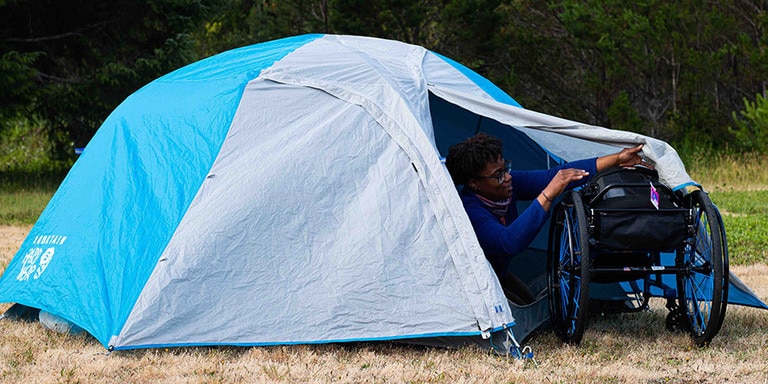
Any camping trip takes planning and preparation; using a checklist helps ensure you don't leave important gear or personal items behind, especially any essential medical supplies you might need. You can use our comprehensive camping checklist as a starting point, then edit and add to it according to your needs. After you return, check and refine your checklist for next time.
Gear Tips for Campers Who Use Wheelchairs
Evaluate gear and supplies with your unique needs in mind. Below we list considerations for people who use mobility devices. Many of these tips relate to helping maintain body warmth.
Tent: You need a dry place to stash your wheelchair, so bring a tent with a large enough vestibule, porch or covered area right outside the door. Many tents also offer a large vestibule as an add-on accessory you can purchase. Make sure the vestibule and tent provide enough headroom so that you don't bump the ceiling when you move around in your wheelchair.
Another tactic is to bring a much larger tent, like a 4- or 6-person model, for yourself and your campmate. If that tent also has two rooms, you can set up a separate hygiene area or portable camp toilet in one of them. That saves you from having to travel to the campground restroom.
It's important that your tent's door has a shallow lower lip (or none at all) so that you can easily roll your wheelchair in and out. (Threshold height is not typically listed, though, so seeing tents in a store is the best way to shop.)
Cot: A raised sleeping surface makes transferring from your wheelchair to your bed so much easier than if you sleep on a pad on the ground.
Blanket and sleeping pad: Using a blanket or quilt may be easier than trying to maneuver your legs in and out of a sleeping bag. Having a sleeping pad is also critical to maintaining warmth, so get a sleeping pad with a high R-value. (Learn more about how sleeping pads are rated and what R-value means).
Base layers: To help them maintain warmth, both of our wheelchair camping experts often wear long underwear during the day—and when sleeping.
Rain protection: Beyond a traditional rain jacket, Cypher said she uses gear like a poncho or "rain skirt" (a specialty item) to help keep her lap dry.
Shower chair: Available at medical supply stores, this can sometimes make it possible to use a non-accessible campground shower.
Daypack or specialized wheelchair bag: Cypher has a custom-made bag that attaches to her wheelchair to hold personal essentials. Prior to that she used a daypack that she chose after trying out different ones in a store to see which ones' straps fit her chair well.
Food: Hot meals and beverages can help you maintain warmth. Conversely, cold food and drinks can help you cool down. If you're overheated, you can also apply ice cubes from your cooler to your skin. Neutral-temperature foods are good when you're comfortable, too, because they won't heat you up or cool you down.
One way to simplify meal prep is to bring prepackaged backpacking entrees because many require only that you add boiling water. Food that requires no cooking at all, like sandwiches, can make food prep even easier.
Freewheel: This wheelchair accessory is an oversized front wheel that attaches to the footrest of your manual wheelchair to create an all-terrain vehicle. A freewheel makes it easier to roll over uneven campground surfaces and trails.
Other Considerations for Campers Who Use Wheelchairs
A camping assistant: Many wheelchair users will be camping with a friend, family member or support provider who can assist with chores like tent setup. "Your caretaker kind of has to do the work of two people," said Wacker, "so be mindful of that." Being ultra-organized and keeping food prep simple is a good approach. Cypher has these suggestions for assistants: "Ask before you help. Don't assume you need to do every task. Good communication is key."
Discounts: Many parks and recreation areas offer discounts to people with disabilities, so check to see if any are available and find out how to apply for them. One excellent program for national parks and other federal lands is the Access Pass, a lifetime pass that provides admittance to more than 2,000 recreation sites managed by five federal agencies. Available for a nominal one-time processing fee, the Access Pass requires documentation of a permanent disability. Almost all states also offer a state park access pass. Access passes also offer discounts on a range of activities, such as camping and fishing.
Trip length: Between camping gear and medical and personal essentials, you have a lot of stuff to bring and set up. For that reason, our wheelchair camping experts recommend going for two nights (three days) on your first few trips. That ensures you have one full day where your main task is to relax and enjoy being outside.
Trip location: Picking a camping place nearby is a good tactic for your first few trips. If conditions turn awful or a major issue arises, that makes it easier to head for home (where you can start planning for a more successful trip next time).
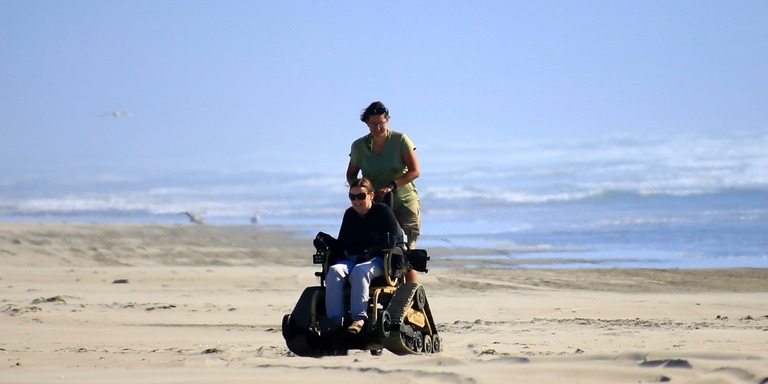
Mobility device rentals: Some state parks, including ones in Minnesota Michigan and Kansas, to name a few, offer all-terrain electric powered chairs for visitors to explore trails and other areas that may not be suitable for regular wheelchairs. The state agency or a private partner often provides the chair for use for free or at lower cost.
Weather: Preparing for weather is central to camping, but temperature regulation can be a challenge for people with medical conditions. If that's your situation, monitor forecasts and go when temperatures aren't likely to get too hot or too cold. Also look for a clear weather window. Forecasts aren't certainties, though, so also prepare for a variety of weather conditions, including rain. After you've camped a few times and successfully maintained your comfort in warm and cold conditions, then you can be less fussy about forecasts on future trips.
All photos courtesy of the Oregon Spinal Cord Injury Connection.

